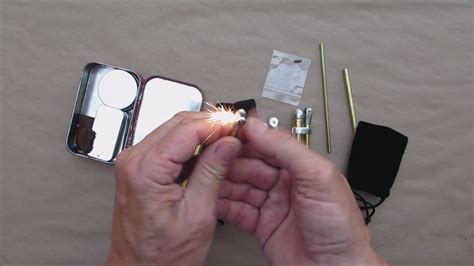Introduction to Spark Generators
A spark generator is a device that creates a high-voltage electrical discharge, producing a visible spark. These devices have various applications, including scientific experiments, ignition systems, and even entertainment purposes. In this comprehensive guide, we will explore the world of DIY Spark Generators, covering the fundamentals, safety precautions, and step-by-step instructions for building your own.
Understanding the Basics of Spark Generation
To create a spark, you need to generate a high-voltage electrical potential difference between two electrodes. When the voltage exceeds the breakdown voltage of the air gap between the electrodes, an electrical discharge occurs, resulting in a visible spark.
Key Components of a Spark Generator
| Component | Function |
|---|---|
| High-voltage transformer | Steps up the input voltage to generate a high-voltage output |
| Capacitor | Stores electrical energy and releases it quickly to create a spark |
| Spark gap | Consists of two electrodes separated by an air gap, where the spark is generated |
| Resistor | Limits the current flow and protects the circuit components |
| Diode | Allows current to flow in one direction and prevents reverse current |
Safety Precautions for Working with High-Voltage
Before embarking on your DIY spark generator project, it is crucial to understand and follow safety precautions to avoid potential hazards.
Risks Associated with High-Voltage
- Electric shock
- Burns
- Fire hazards
- Electromagnetic interference
Essential Safety Measures
- Always work in a well-ventilated area
- Wear protective gear, such as insulated gloves and safety glasses
- Use proper grounding techniques
- Keep flammable materials away from the spark generator
- Disconnect power sources when not in use

Designing Your DIY Spark Generator
Choosing the Right Components
When selecting components for your spark generator, consider the following factors:
- Voltage rating of the transformer
- Capacitance of the capacitor
- Wattage rating of the resistor
- Current rating of the diode
Circuit Diagram
Here is a basic circuit diagram for a DIY spark generator:
+-------+ +---||---+ +-------+
| | | | | |
| T | | C | | R |
| | | | | |
+---+---+ +---+----+ +---+---+
| | |
| | |
+------+-------+ |
| |
| +-------+ |
| | | |
+------+ S +---------+
| |
+-------+
T: High-voltage transformer
C: Capacitor
R: Resistor
S: Spark gap
Step-by-Step Guide to Building Your Spark Generator
Tools and Materials Required
- High-voltage transformer
- Capacitor
- Resistor
- Diode
- Spark gap (can be made with two bolts or nails)
- Insulated wire
- Soldering iron and solder
- Breadboard or PCB
- Enclosure (optional)
Assembly Instructions
- Connect the primary winding of the transformer to the power source
- Connect the secondary winding of the transformer to the capacitor
- Connect the resistor in series with the capacitor
- Connect the diode in parallel with the resistor, ensuring correct polarity
- Connect the spark gap across the capacitor
- Double-check all connections and ensure proper insulation
- Test the spark generator in a safe environment
Troubleshooting Common Issues
| Issue | Possible Cause | Solution |
|---|---|---|
| No spark | Loose connections | Check and secure all connections |
| Weak spark | Low input voltage | Increase the input voltage within the transformer’s rating |
| Overheating | Insufficient ventilation | Ensure proper ventilation and heat dissipation |
| Inconsistent sparks | Dirty or damaged spark gap | Clean or replace the spark gap electrodes |
Applications of DIY Spark Generators
Scientific Experiments
- Demonstrating electrical principles
- Studying the properties of gases
- Investigating the effects of high-voltage discharges
Ignition Systems
- Internal combustion engines
- Gas burners
- Fireworks displays
Entertainment and Special Effects
- Tesla coils for visual displays
- Jacobs ladders
- High-voltage arc displays
Frequently Asked Questions (FAQ)
-
Q: Can I use any transformer for a spark generator?
A: No, you should use a high-voltage transformer specifically designed for spark generation. Using an inappropriate transformer can lead to safety hazards and poor performance. -
Q: What is the ideal capacitance value for a spark generator?
A: The capacitance value depends on the desired spark characteristics. Generally, capacitance values ranging from a few picofarads to several microfarads are used. Larger capacitance values will produce more energetic sparks. -
Q: How can I adjust the spark length?
A: The spark length can be adjusted by changing the distance between the spark gap electrodes. Increasing the gap will result in longer sparks, but it will also require a higher voltage to overcome the increased air resistance. -
Q: Is it safe to touch the spark generator while it’s operating?
A: No, it is never safe to touch a spark generator while it’s operating. High-voltage electrical discharges can cause severe injuries or even death. Always ensure proper safety precautions and never touch live components. -
Q: Can I power my spark generator with batteries?
A: While it is possible to power a spark generator with batteries, it is not recommended for high-voltage applications. Batteries may not provide sufficient voltage or current to generate strong sparks consistently. It is better to use a regulated power supply or mains electricity with appropriate safety measures.
Conclusion
Building a DIY spark generator can be an exciting and educational project for enthusiasts interested in high-voltage electronics. By understanding the fundamentals, following safety precautions, and carefully designing and assembling the components, you can create a functional spark generator for various applications. Remember to prioritize safety and always work within your skill level and knowledge. With proper care and attention to detail, your DIY spark generator can provide hours of fascinating experiments and demonstrations.

No responses yet